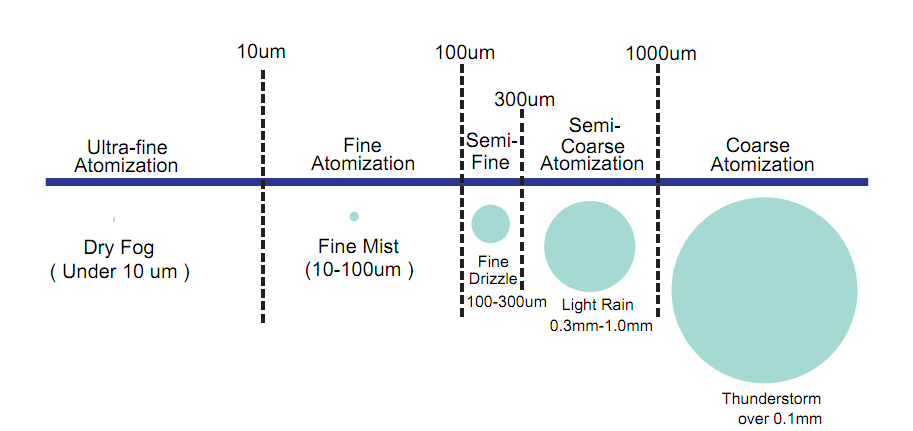We know the fog or mist produced by a nozzle may have tens of thousands of small droplets and the diameter of the droplets are not the same. So when we talk about the diameter of droplet size of a nozzle, it is only a statistical representations.
There are several statistic index to be used to describe the droplet size of a nozzle. The most usually used ones are SMD, Dv0.9, Dv50.
Sauter Mean Diameter have some different expression, such like SMD, D32, D[3,2]. SMD is an average of particle size. It is defined as the diameter of a sphere that has the same volume/surface area ratio as a particle of interest.
When we consider the problem of evaporation rate, SMD is an important factor to understand it.

Dv0.9, also known as DV0.9,D(V, 0.9),Dv90%, which refer to a value that 90% of the droplets are smaller than it. Take an example, for a full cone nozzle, the test result of droplet size is Dv0.9=260 microns at 3bar pressure, that means, when the testing pressure is 3bar, 90% of the droplets of this full cone nozzle are smaller than 260 microns and 10% of the droplets are larger than 260 microns.
Dv0.5, the same with VVM, D(V, 0.5), Dv50%, have the similar meaning of Dv0.9 while only investigate 50% of the droplets.
In Mistec, if we do not point out the index, we refer it to SMD, the Sauter Mean Diameter.


